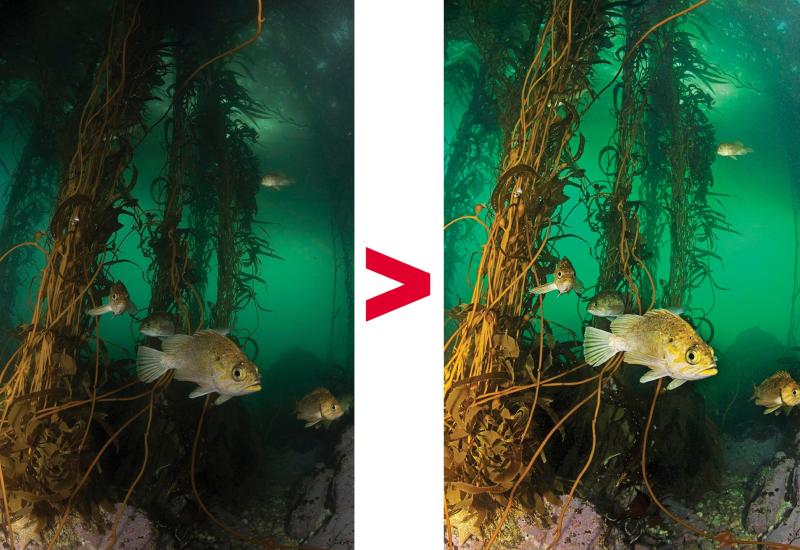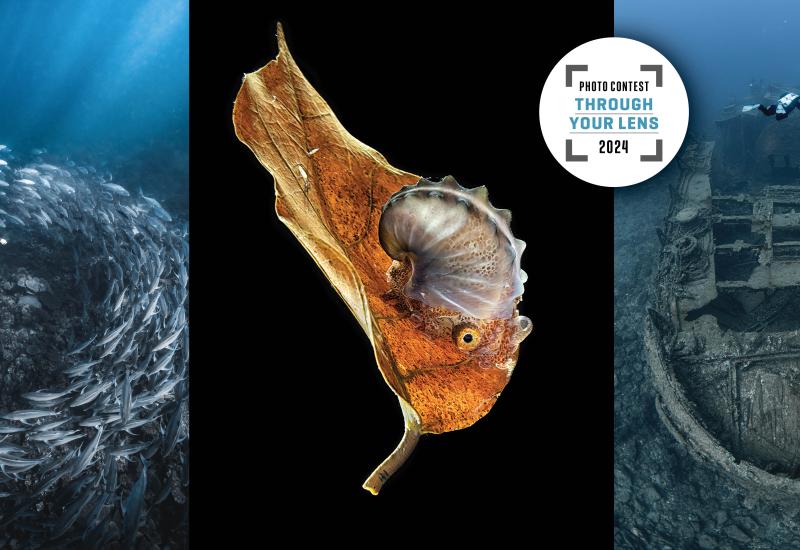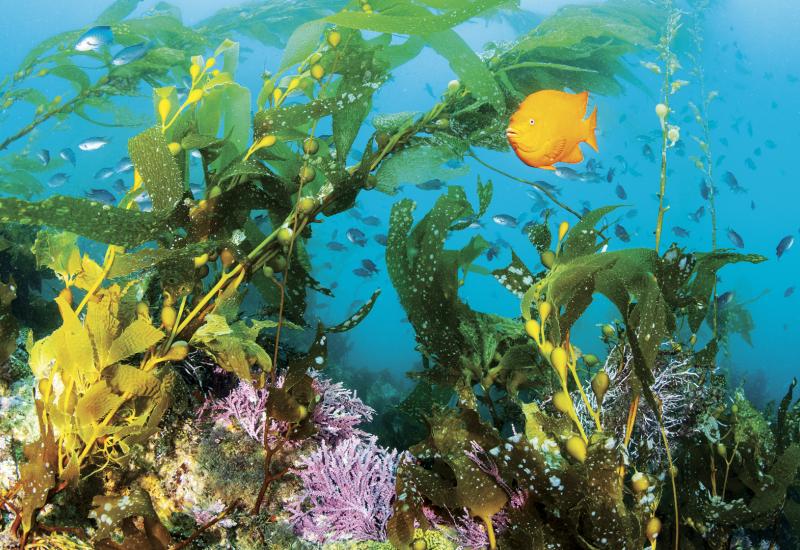10 Tips for Winning Underwater Photo Contests
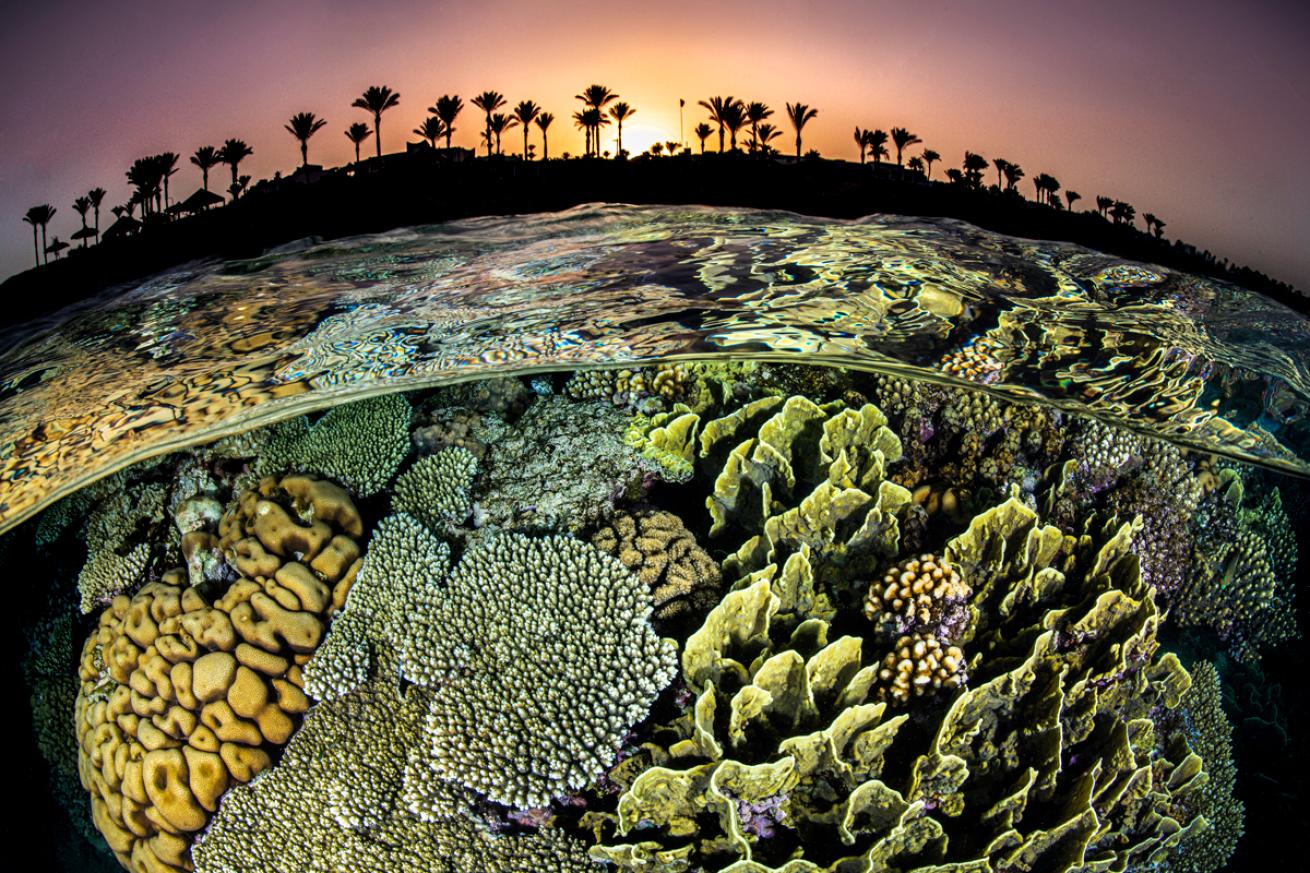
Alex MustardContrast, color and a split-shot technique combine to give this scene impact.
Contests are filled with photographers’ best work, and it is almost impossible to predict which photos will win, but the shots that demand instant attraction remain at the top of the heap. The simple recipe for competition success is to strive for images with maximum impact. The following tips and techniques will help you create underwater images that people can’t help but look at.
Tip 1: Captivating Contrast
Like a neon sign on a dark street, contrast in pictures naturally draws the viewer’s eye. However, even the clearest water is murky when compared to air, and many underwater pictures end up as a mix of similar midtones. Frames with contrasting lights and darks will always grab the eye. You can also boost contrast during processing, by applying Auto Contrast in Photoshop or Auto Tone Control in Lightroom.
Tip 2: Tack Sharp
Detail revealed by razor-sharp focus is a feast for the eyes. However, when that detail isn’t perfectly focused the picture becomes frustrating for the viewer. When viewing any photo, you look at the eyes of the subject first. Whether the rest of the subject needs to be in focus is an ongoing debate, but everyone agrees that the eyes must be sharp. When shooting macro subjects, try experimenting with more open apertures to reduce the amount of the picture that is in focus, which will enhance the feeling of sharpness in the subject.
Tip 3 : Force Perspective
Ultra-wide-angle lenses cut through the murk, allowing you to shoot the biggest scenes from as close as possible. Their party trick, though, is to force perspective, making a subject close to the lens pop out from its surroundings. Despite being a wide-angle shot, your strobes need to be pulled in tight to the housing and on lower power to light the subject properly.
Tip 4: Dramatic Lighting
Even the most ordinary subject can be transformed by different lighting. You will generally work with two light sources underwater: ambient light from the sun and artificial light from your strobes. Eye-catching lighting can be created with either or both. An underwater sunburst is particularly beautiful and a great addition to any scene when handled well.
Tip 5: Color Pop
Color can be striking to a viewer, and it is used to great effect on everything from warning signs to food packaging. Bright hues trump dull ones, but even more eye-catching is the juxtaposition of strong opposite colors appearing together. Underwater backgrounds are usually some shade of cool blue, so if you place a warm-colored subject—say, a red octopus, yellow coral or orange fish—against it, your image will pop!
Tip 6: Deep Impact
Photographs reduce the world around us into a flat picture. That picture is so much more inviting when you create a feeling of depth in the composition. When shooting macro, you can use a shallow depth of field to create a feeling of depth. When taking wide-angle images, this depth comes from careful composition of middle-distance and background elements behind your subject to create layers.
Tip 7: Dynamic Composition
How you choose to frame your subjects allows you to put a stamp of originality on your pictures. Shooting a popular critter the same way as everyone else won’t help you stand out. Composition involves both how you balance the different elements in your picture and also what you choose to include in—or perhaps more important, exclude from—the frame. When framing up, you should ask yourself if everything looks right, or if there is anything in the shot that shouldn’t be there.
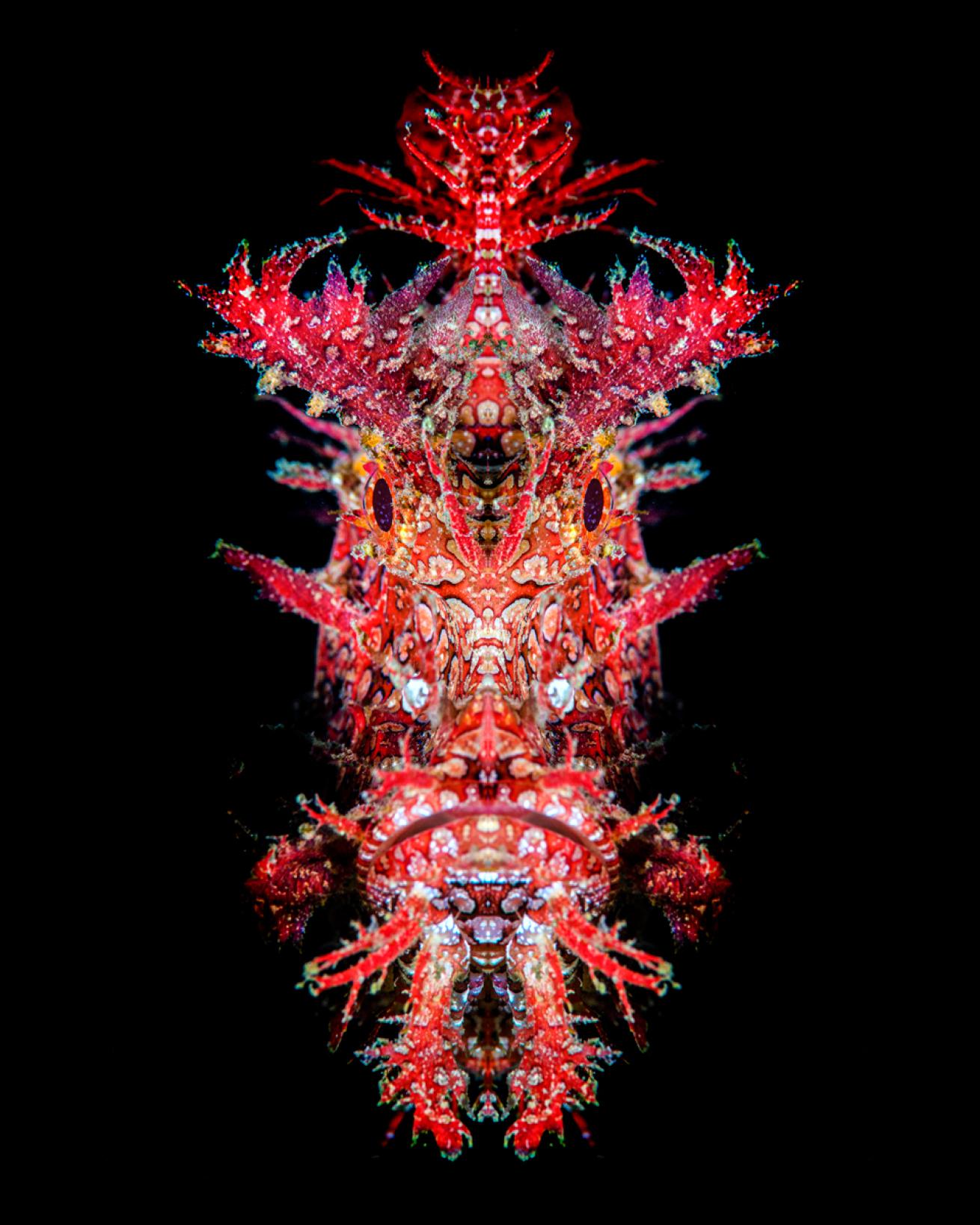
Alex MustardStrong color, graphic symmetry and a clean black background make this mir- rored Rhinopias portrait eye-catching.
Tip 8: Get Creative
Humans love novelty. Photos taken using techniques like long exposures, splitshots, snooted lighting or off-camera strobes win contests time after time. However, these shots need to be more than just demonstrations of creative techniques; you need to seek out the subject matter that looks best when photographed this way.
Tip 9 : Graphic Strength
Simple images are strong images. Most of the time, the less that’s going on in the frame, the more impact it will have. Look at how many award-winning macro shots have a plain black background. You can give your pictures even greater impact by seeking out strong shapes, lines, patterns, textures and curves in the underwater world and letting one of these graphic shapes dominate the picture.
Tip 10: Gesture And Moment
Timing is everything in still photography. A photo should keep the viewer’s attention. You might be able to predict the peak of action in a behavior shot, such as a cleaner fish going into the mouth of a client. But most of the time it comes down to reacting in the moment, such as when a school of fish sweeps past, momentarily lining up in perfect synchrony.

